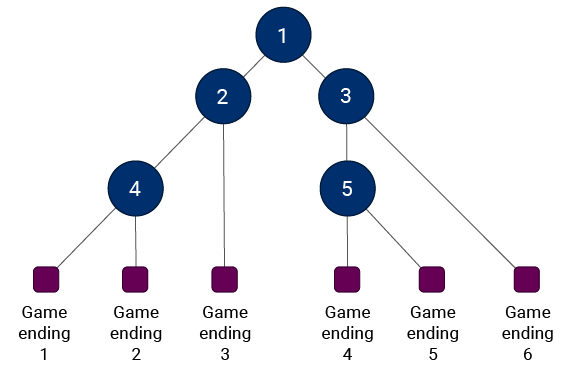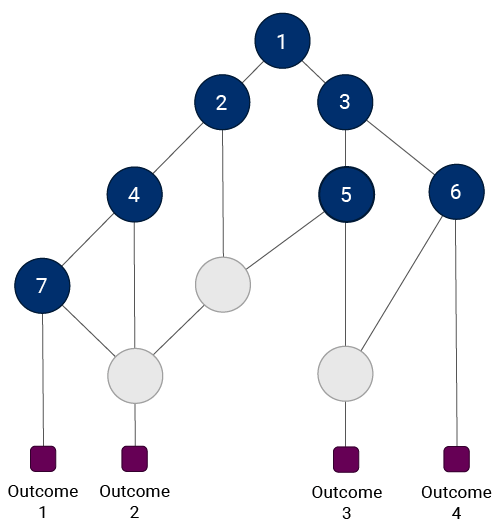Decide Between Linear and Non-Linear Storytelling
Players increasingly seek narratives that provide deeply immersive experiences. While some players prefer the structured progression of linear narratives, others are drawn to the freedom offered by non-linear stories. Since video games inherently grant players some degree of choice during gameplay, every game possesses a certain level of linearity.
As you develop your story, you will need to determine the appropriate degree of linearity. However, this does not imply that you must adhere strictly to either a linear or non-linear structure for the entirety of the narrative. Instead, consider which parts of your story should be more linear and which should be more non-linear. Generally, the more freedom you allow the player, the more non-linear your game will become.
When addressing the question of whether linear or non-linear narratives are superior, it is important to note that linear narratives are easier to write but often offer less replay value than their non-linear counterparts. However, both formats have dedicated audiences, and neither is inherently superior to the other.
Making Your Story More Non-Linear
In non-linear games, players have considerably more freedom to craft unique experiences compared to linear games. This increased freedom stems from the broader range of options available to them. Moreover, non-linear games typically offer higher replay value. However, as the narrative becomes more non-linear, it may also become less central to the overall experience, potentially taking a back seat to gameplay mechanics. This can occur because the emotional engagement curve in non-linear narratives is more difficult to predict due to the vast number of choices available to players.
To enhance the non-linearity of your narrative, you may incorporate any of the following design elements:
Players can choose which activities to engage in and when.
Players can decide the order in which they complete tasks.
Players can determine when to pursue the game’s objectives and when to freely explore the world.
Players can choose from multiple routes to reach their destination.
Players can revisit previously explored areas.
Players may adopt different tactics to accomplish their goals.
Players can improve their in-game skills at any time.
Players can interact during conversations with their character.
Players can decide the sequence in which certain actions are performed.
Players can engage with various objects during a specific activity.
Players can customize their characters, units, or any other game elements they control.
Players can perform different actions that lead to diverse consequences.
Players can utilize the same rewards in multiple ways.
Players may access new rewards without restrictions.
Examples:
Players can enter level B without first completing a particular task in level A.
Players may acquire advanced equipment without unlocking all preceding items.
Players may obtain a high-performance vehicle without first collecting lower-tier ones.
When designing non-linear narratives, players should feel that they are in control and actively shaping the story. For instance, if your game includes side quests that influence the main plot, allow players to complete these quests at their own pace. It is essential that such quests are meaningful and engaging, rather than serving merely to artificially extend gameplay duration.
It is also crucial to manage the complexity of the branching narrative. If the decision tree grows without constraint, the amount of content required may exceed your available time or budget, making it difficult to complete the project as intended.
In this example, the game incorporates five carefully selected dialogues (represented by blue circles), each offering players a choice that determines the outcome of the interaction. Players may experience two or three of these dialogues during a single playthrough, but never all five. Each choice either unlocks an additional interactive dialogue or leads to a distinct game ending (represented by purple squares).
To preserve the foundational structure of the story, you may design multiple branches that converge at specific points.
In this example, the game features seven decision points (represented by blue circles) within a segment of the story, where some choices lead to shared outcomes (represented by grey circles).
However, this solution carries certain risks during replay. Players might perceive that some of their decisions are inconsequential if the story ultimately converges at predetermined points. To address this, you can either increase the complexity of the branching narrative by adding more unique outcomes or reduce the number of decision points. Another challenge arises in maintaining a non-linear structure when players are allowed to choose the order of objectives and quests, yet the difficulty level must continually increase. In such cases, you must implement a system that dynamically adjusts the difficulty of subsequent tasks based on player progress.
Overall, creating a complex branching narrative is a time-intensive endeavor. It may not always result in a more compelling story than a simpler, more structured narrative.
Making Your Story More Linear
Linear games follow a clearly defined narrative path, where players have limited opportunities to explore the game world or deviate from the intended storyline. If you choose to develop a linear game, the story will unfold precisely as intended, as players have minimal influence over its direction. In this scenario, the player’s experience may resemble that of a viewer watching a film or a reader engaging with a novel.
To implement a more linear narrative, you can apply the inverse of the previously listed non-linear design elements. For example, while a non-linear game may allow players to select from a variety of activities, a linear game would restrict such freedoms, guiding players through a specific sequence of tasks and events.


